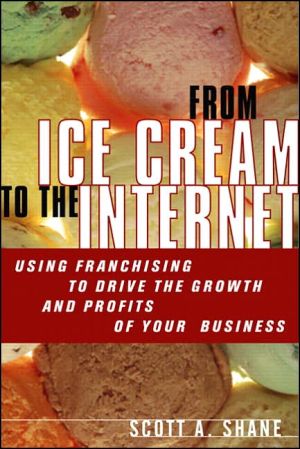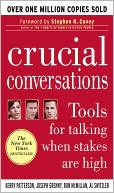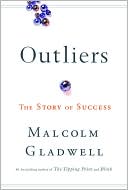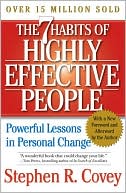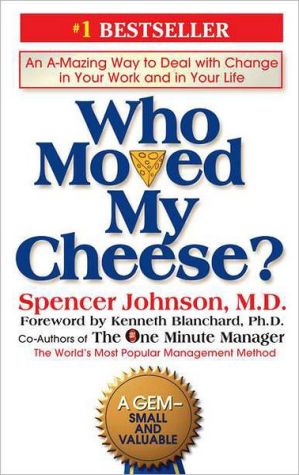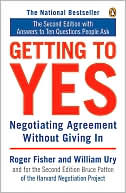From Ice Cream to the Internet: Using Franchising to Drive the Growth and Profits of Your Company
In this book, Dr. Scott A. Shane systematically helps businesses assess the pros and cons of the decision to franchise. This book focuses squarely on the issues and challenges faced by franchisors. Shane answers key questions such as: What do successful franchisors do differently from unsuccessful franchisors? Why do some companies in an industry choose to franchise while their competitors don't? How does the decision to franchise affect your ability to compete with firms that don't? For...
Search in google:
In this book, Dr. Scott A. Shane systematically helps businesses assess the pros and cons of the decision to franchise. This book focuses squarely on the issues and challenges faced by franchisors. Shane answers key questions such as: What do successful franchisors do differently from unsuccessful franchisors? Why do some companies in an industry choose to franchise while their competitors don't? How does the decision to franchise affect your ability to compete with firms that don't? For businesses that choose to move forward, Shane presents proven principles for every aspect of building a successful franchising system, including: recruiting, selecting, managing and supporting franchisees; establishing territories and pricing; managing expansion; and navigating the unique legal and institutional challenges of franchising.
INTRODUCTIONINTRODUCTION\ Franchising has become the dominant mode of retail entrepreneurship in the United States. The number of businesses involved in franchising in some way is astounding. At most recent count, almost 2,300 companies manage franchise chains in more than 80 industries. These companies work with 767,000 franchisees that employ 10 million people—as many as all manufacturers of durable goods combined.1 Moreover, franchise systems generate $1 trillion in sales annually, accounting for approximately 40 percent of all U.S. retail sales.2\ Franchising is also becoming a more common business model. The number of franchised outlets in the United States increased by 146 percent from 1980 to 2003, an average of 6 percent per year, as franchises have replaced independent businesses in industries as diverse as fast food, banking, Internet services, automotive repair, and eye care. In fact, in the United States today, a new franchised outlet opens approximately every 8 minutes.\ This pace of growth has been on an accelerating trajectory in recent years. The number of franchised outlets in the U.S. economy grew by only 28 percent in the 11 years between 1980 and 1991, but it grew 92 percent in the 11 years between 1991 and 2002.3\ Franchising is growing even faster internationally, leading the House Committee on Small Business to define franchising as one of America's most rapidly growing exports. Currently, approximately 500 American companies operate more than 50,000 franchised outlets overseas. Ninety percent of all franchisors in this country are planning to expand internationally in the next decade, and roughly half of all franchised outlets established in the past decade were set up outside the United States.\ The industry distribution of franchising is also quite broad. Franchise systems are currently found in more than 80 different industries, with more industries being added every year. Recent industry additions to franchising include advertising for on-hold telephone calls and outlets offering three-dimensional ultrasound, allowing people to see their soon-to-be-born children.\ Despite the common perception that it is all about small business, franchising is a strategy adopted by a surprisingly large number of big businesses. Several Fortune 500 companies, including Ashland Oil, First Interstate Bancorp, McDonald's®, Medicine Shoppes International, Merrill Lynch, Ponderosa®, Postal Instant Press, Prudential Insurance, S.C. Johnson, Shoney's®, Snelling and Snelling, TCBY Enterprises, Union Carbide, and Wendy's International, have used or currently use franchising as a business model.4 Five percent of all franchisors are public companies, including Ben Franklin® stores, Big O Tires®, Doubletree® Hotels, Gymboree®, Microage Computer Centers, Staff Builders® International, and Swisher International.5 Ironically, franchising is also an avenue for private equity firms interested in taking public companies private again, as well as financing management buyouts and making acquisitions. Recent private equity deals involving franchising include The Dwyer Group, Cottman® Transmission Systems, Carvel® Ice Cream, Sylvan Learning Centers®, El Pollo Loco®, Chem-Dry®, Meineke® Car Care, Ruth's Chris® Steakhouse, Nutri Magic®, and Money Mailer® Systems.6\ The Purpose of This Book\ Obviously, franchising is an important business model chosen by some firms in some industries. What makes franchising particularly interesting, however, is that the adoption of it appears to be a strategic choice made by some businesses and not others. For example, although at least 12 coffee companies franchise, Starbucks® steadfastly resists the use of this strategy. As a result, many franchised coffee companies, such as Seattle's Best Coffee®, compete head to head with a giant chain of company-owned coffee houses. Similarly, although most large restaurant firms franchise their operations—in the restaurant industry, only 13 of the 100 largest chains chose not to franchise—General Mills operates its Olive Garden® and Red Lobster® chains directly.7 This leads General Mills to compete as a company-owned chain with many other firms that use a very different approach to operate their businesses.\ The choice of some companies to compete by franchising and other companies to compete by owning all of their own outlets leads to the first goal of this book: to explain when franchising is a good strategy for a firm to adopt and when it is not. Franchising has advantages and disadvantages that influence the ways in which firms compete successfully with each other. As the entrepreneur who founded a company or a manager who runs one, you need to decide how to best compete with firms that franchise when you do not, and vice versa.\ In addition, you probably want to figure out whether you are better off using franchising in your business. The chapters that follow will help you to answer this question: Should I franchise my business or not? This book examines the feasibility of franchising in your industry, the pros and cons of franchising, the legal and institutional requirements to franchise, and the management challenges of doing so, to help you to understand whether your company is better off on balance being a franchisor.\ Of course, you might have already decided that you should franchise your business (or reading the first few chapters has led you to decide to adopt this business model). As you certainly realize, being successful at franchising requires you to design an effective franchise system. This book will also help you to do that, identifying the policies and strategies that are necessary to create a winning franchise operation.\ This is important because, despite the widespread reach of franchising, surprisingly few companies succeed at franchising. In fact, of the more than 200 new franchise systems established in the United States each year, 25 percent don't even make it to their first anniversary, approximately three quarters fail within a decade, and only 15 percent make it to 17 years. The poor performance of most firms that franchise raises several questions that you need to answer: Why do so many new franchisors fail? What do successful franchisors do differently from unsuccessful franchisors? This book examines the policies and strategies that successful franchisors adopt and how they differ from those of unsuccessful franchisors, to provide a framework for entrepreneurs and managers to understand how to establish a winning franchise system. This book also serves as a guide for entrepreneurs and managers with ineffective systems to redesign their systems for success.\ How Is This Book Different from Other Books?\ Other people have written books about franchising, so it is important for you to know how this book is different from other books on franchising. Perhaps most important, this book takes the perspective of the franchisor, not the franchisee, which is the perspective taken by the vast majority of books on franchising. The franchisee-focused approach is not very useful to managers and entrepreneurs trying to figure out how to make their companies successful at franchising. Books that take this focus concentrate on what an individual should do to get started as a franchisee and seek to answer questions like "How do I select the right franchise outlet to buy?" or "What are the hot properties in franchising today?" They offer little guidance to managers and entrepreneurs about how to grow their companies through franchising or how to use franchising as a strategy to make their companies more profitable. In contrast, this book provides a guide for entrepreneurs and managers to use in evaluating franchising as a business strategy.\ This book is also different from most books on franchising, which focus on the operational details of how to franchise. While "how to" books are important and are fine for answering many questions that are important to franchisors, such as "How do I advertise my franchise at a trade show?" or "How do I fill out a Uniform Franchise Offering Circular (UFOC)?", they do very little to help entrepreneurs and managers succeed. Unfortunately, there is no answer to a "how to" question that is a secret to success. Insight into success tends to come from answers to "why" questions. So there is no way to follow the recommendations of "how-to" books to increase the chances of being successful with franchising.\ To be successful in franchising, you need to master the basic principles of business and economics that underlie franchising. What you need is a book that tells you what those principles are and how to apply them to design an effective franchise system. This book provides those principles and helps you use them to design an effective franchise operation.\ Moreover, this book takes the idea of identifying these principles—and explaining how to apply them—seriously by developing a framework of rules for success that are based on rigorous academic research. This framework explains why certain actions should lead to success and offers persuasive evidence to support those explanations. The book uses this framework of research to identify decision rules for whether franchising is appropriate for your industry, whether the benefits of franchising outweigh the costs, whether you have a business concept that is appropriate for franchising, and which policies and strategies to adopt to make franchising successful. The decision rules presented in the chapters that follow will help you to choose such things as the right royalty rate and franchise fee for your franchise system; whether to use master franchising, area development agreements, or sub-franchising to grow your system; and what policies to adopt to control the behavior and actions of your franchisees.\ What This Book Does Not Do\ Having said what this book does, it is only fair to tell you what it doesn't do. This book doesn't deal with the day-to-day management of a franchise system. It doesn't tell you how to accomplish the nitty-gritty steps that are necessary to set up a franchise system. Many books out there can explain these things to you. In addition, there is a cottage industry of franchise consultants and attorneys whose bread and butter lies in offering this assistance. It is certainly helpful for you to read other books on franchising or to talk to franchise attorneys and consultants—in fact, it is probably a very bad idea to begin franchising without having first talked to a franchise attorney. However, the information that these experts provide is not a substitute for what is contained here. You need to develop a good, sound analysis of whether to franchise your business, how to compete with firms that do not franchise if you do (and vice versa), and what kinds of policies and strategies you need to adopt if you decide to franchise. The lessons contained in the chapters that follow will help you do just that.\ Who Should Read This Book and When Should They Read It?\ You should read this book if you are thinking of starting to franchise your business, whether you are an entrepreneur or a manager in an existing company. It will help you to figure out whether franchising is a good strategy for your company, as well as the right policies and strategies to adopt if you choose to franchise. You should also read this book if you already operate a franchise system, but your system is not doing well. You are likely to find tips here that you can use to improve your existing franchise operations. You should also read this book even if you are not planning to franchise your business, but your competitors are. It will provide useful information for you about the weaknesses of franchising as a competitive strategy that you might be able to exploit. Furthermore, you should read this book if you are thinking of becoming a franchisee or are already one. Although this book approaches franchising from the franchisor's perspective, it is useful for you to know what franchisors do and why they do it. That knowledge will help ensure that your relationship with your franchisor is as free of conflict as possible.\ Ideally, you should read this book when you begin thinking about franchising. Because this book focuses on identifying the favorable industries for franchising, the right business concepts for franchising, the pros and cons of the business model, and the policies and strategies that make franchising effective, the tools and ideas that you will get from reading the book are best used before you are locked into a particular approach. The frameworks described in the following pages, along with the recommendations for "dos and don'ts" and the questions to ask yourself, are designed to help you think about whether to franchise and how to set up a successful franchise system if you decide to do so.\ However, even if you have an existing franchise system that might be difficult to change, or you have adopted a strategy of not franchising while your competitors have adopted one of franchising, it is not too late to read this book. Many things in the chapters that follow are valuable to entrepreneurs and managers even after a franchise system is in operation.\ Sources of Knowledge Underlying This Book\ Because I have said that this book uses academic research to create a framework for deciding whether to franchise and for designing a successful franchise system if you decide to franchise, it is only fair for me to describe for you the sources of information underlying the book. The book has two specific sources of information. Some parts of the framework and evidence presented here are based on my own primary research. For the past decade, I have researched franchising from the point of view of franchisors. The studies I have conducted provide many useful results for determining whether to adopt policies such as allowing passive ownership of franchised outlets or deciding when to expand your franchise system overseas.\ Other parts of the book are based on the research of other academics. I have distilled the key action steps from hundreds of studies that you, as a franchisor, should follow to enhance your performance at franchising.\ Regardless of the source, this book compiles, combines, and translates into plain English, material that is otherwise available only in a variety of different academic articles and books. As a result, you will find all of the key concepts that you need to figure out whether to franchise your business; how to compete with companies that franchise if you do not; and how to operate a successful franchise system; summarized and explained in one place, in a clear and straightforward manner.\ The Key Lessons\ Successful franchisors approach franchising differently from other firms, not because their people are smarter than or different than those in other firms, but because they have learned when, why, and how franchising is successful. This book presents 11 rules to follow for a company to be successful at franchising. Each of these rules is explained in a different chapter of the book:\ \ Select the right industry.\ Understand the advantages of franchising.\ Pay attention to the disadvantages of franchising.\ Make sure that your business concept can be franchised.\ Adopt the right policies to manage the franchise system.\ Find the right approach to franchisee support and assistance.\ Develop the right strategy toward franchisee territories.\ Price the franchises appropriately.\ Develop the right strategy toward system expansion.\ Understand the legal and institutional environment of franchising.\ Recruit, select, and manage franchisees effectively.\ \ An Overview of Chapters\ The first rule of franchising explained in this book is to make sure that your industry is one that is appropriate for franchising. Some industries are simply better than other industries for the creation of franchise systems. Half of all franchisors are concentrated in the top ten industries for franchising. In some industries, such as tax preparation, printing and copying, and specialty food retailing, franchisors now account for the majority of all firms.8 Chapter 1, "Is Franchising Right for Your Industry?", defines franchising and gives a short history of the business model. It then identifies nine characteristics that make franchising appropriate for an industry: Production and distribution occur in limited geographic markets; physical locations are helpful to serving customers; local market knowledge is important to performance; local management discretion is beneficial; brand name reputation is a valuable competitive advantage; the level of standardization and codification of the process of creating and delivering the product or service is high; the operation is labor intensive; outlets are not terribly costly or risky to establish; and the effort of outlet operators is hard to measure relative to their performance.\ The second rule of franchising is to understand the advantages offered by this business model. Franchising is not a panacea for all business woes, but it does provide distinct advantages to the firms that use it. Chapter 2, "The Advantages of Franchising," outlines three categories of benefits that franchising provides to firms. It offers an effective model for selecting and providing incentives to outlet operators; an efficient mechanism for obtaining capital and human resources for rapid firm growth; and a lucrative economic model, generating financial returns at relatively low risk.\ The third rule of franchising is to understand the drawbacks of this organizational arrangement. The advantages of franchising described in Chapter 2 come at the expense of four major disadvantages, which are discussed in Chapter 3, "The Disadvantages of Franchising":\ \ Franchisors and franchisees have different goals, which come into conflict.\ Franchisors' use of contracts to link themselves to legally independent franchisees leads to transaction cost problems, such as free riding, which do not exist with company-owned chains.\ Innovation and change initiated at headquarters are more difficult to implement with franchising than with company ownership of outlets.\ The absolute level of profits from franchising is lower than that of operating company-owned outlets.\ \ Making the decision to franchise, figuring out how to compete with firms that do not franchise, and developing the right policies and strategies toward franchising all require an understanding of the four types of disadvantages that franchising entails.\ The fourth rule of franchising is to ensure that you have a business concept that is appropriate for franchising. Although many business concepts are valuable, only a small number of them can be franchised to other people. Chapter 4, "What Business Concepts Can Be Franchised?", discusses three categories of factors that make a business concept appropriate for franchising. A business needs to have a valuable system for serving end customers that can bear the additional costs of the franchising structure. Its operations must be composed of a set of procedures that can be written down and taught to others with limited knowledge of the business. Furthermore, the business needs to appeal to enough potential buyers of the concept to make investing in the up-front costs of setting up a franchise system, which can be several hundred thousand dollars, worthwhile.\ The fifth rule of franchising is to adopt the right policies to manage a franchise system effectively. Because franchising is a business based on contracts between legally independent companies, franchise systems need fundamentally different policies from company-owned chains. Chapter 5, "Key Franchising Policies," identifies four categories of policies that are necessary for effective franchising:\ \ Policies to ensure owner operation of outlets.\ Rules for controlling franchisee behavior.\ Policies for setting the correct contract term.\ Rules about franchisee advertising.\ \ To franchise effectively, you need to adopt the right policies in each of these areas. And if you choose not to adopt franchising but you compete with firms that do, you will need to identify the right policies in each of the areas to determine the weaknesses of your competitors' strategies.\ The sixth rule of franchising is to ensure that you offer the right level of support and assistance to your franchisees—things such as training, site selection, and purchasing. If you offer too little support to them, you are likely to have trouble attracting franchisees. But if you offer too much support, you are likely to attract the wrong type of franchisees, and do so at a cost that undermines your profitability. Chapter 6, "Franchisee Support and Assistance," discusses four categories of support and assistance that you need to consider offering to your franchisees: training, support services, real estate assistance, and financing. This chapter helps you to figure out the right amount and types of this support to offer at different stages in the life of your franchise system.\ The seventh rule of franchising is to develop an effective territorial strategy. Franchising tends to occur in businesses in which sales growth requires the establishment of additional outlets at new locations rather than the expansion of production at an existing location. As a result, it requires franchisors to have a strategy for the establishment of new locations or territories. Often franchisors turn a winning franchise system into a losing one by adopting the wrong territorial strategy. Chapter 7, "Territorial Strategies," identifies the key considerations that you need to make in determining your territorial strategy. It discusses when and how you should use multiunit franchising arrangements, such as master franchising and subfranchising, to exploit new territories, and when you want to offer only single units to prospective franchisees. The chapter also discusses when you want to offer existing franchisees the rights to expand in their territories and when you do not want to use this strategy. Finally, the chapter discusses when you want to establish exclusive territories for your franchisees and how large those territories should be.\ The eighth rule of franchising is to price the franchise system correctly. When you become a franchisor, you enter into the business of selling business opportunities. Like anything else, the ability to sell a business opportunity depends on pricing it right. Charge too high a price, and you will not attract franchisees. Charge too low a price, and you will not make a profit. Chapter 8, "Pricing Franchises," discusses the factors that influence the two major components of the price of a franchise: the up-front franchise fee and the ongoing royalties that franchisees pay to franchisors. The chapter also explains how franchise fees and royalty rates should change as your franchise system matures and grows.\ The ninth rule of franchising is to develop an effective expansion strategy. Most of the time, franchisors are unsuccessful unless they expand their systems from their initial starting point to the minimum efficient scale of operations for companies in their industries. However, as Chapter 9, "Expansion Strategies," explains, expanding a franchise system successfully involves making the right strategic decisions about when you should begin to franchise your business and the geographical pattern your expansion should take, including its international expansion. The chapter also explains that successful expansion involves operating some company-owned outlets. Therefore you to need to determine the right balance between company-owned and franchised outlets in your system over time, as well as decide which outlets to franchise and which to own.\ The tenth rule of franchising is to understand the legal and institutional environment in which it operates. Franchising is a legally regulated mode of doing business, making it important for you to understand how federal and state laws affect the operation of a franchise system. As Chapter 10, "The Legal and Institutional Environment for Franchising," explains, since 1979, franchisors have had to adhere to rules requiring them to disclose to prospective franchisees standard information about the franchise system and its principals, in a form set forth by the Federal Trade Commission. The chapter also explains that some states have adopted franchise registration and relationship laws that affect how you do business as a franchisor in those states, as well as the right strategy to adopt for franchising in different states. Chapter 10 also discusses the importance of certification of franchise operations by the media and the franchise trade association, the International Franchise Association.\ The eleventh rule of franchising is to recruit, select, and manage franchisees effectively. You will not succeed as a franchisor unless you can attract potential franchisees, select the best candidates from among the pool of applicants, and manage them effectively. However, the processes of recruiting, selecting, and managing franchisees are not easy to accomplish effectively. Chapter 11, "Recruiting, Selecting, and Managing Franchisees," provides guidance on how to recruit franchisees successfully by explaining why people buy franchises and how to create a professional sales force that knows ways to generate, qualify, and sell franchise systems to prospects. The chapter also identifies effective selection criteria for ensuring that you choose the best franchisees for your system. Finally, the chapter offers guidance on four basic activities that make managing franchisees more effective: minimizing the number of sources of goal conflict with franchisees; ensuring that the franchise system provides financial benefit to franchisees; communicating clearly about the obligations of franchisees; and controlling franchisee behavior carefully.\ The conclusion of the book returns to the theme introduced in the introduction about how to develop an effective franchising strategy. Specifically, it summarizes the key actions that you should take to determine whether to franchise, to compete with firms in your industry that do, and to design the right policies and strategies toward franchising, if that is the mode of business that you opt to use.\ © Copyright Pearson Education. All rights reserved.
Ch. 1Is franchising right for your industry?1Ch. 2The advantages of franchising23Ch. 3The disadvantages of franchising43Ch. 4What business concepts can be franchised?67Ch. 5Key franchising policies79Ch. 6Franchisee support and assistance105Ch. 7Territorial strategies123Ch. 8Pricing franchises141Ch. 9Expansion strategies155Ch. 10The legal and institutional environment for franchising175Ch. 11Recruiting, selecting, and managing franchisees189
